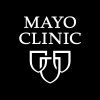
Neurological Outcome After Minimal Invasive Coronary Artery Bypass Graft
Postoperative Cognitive DysfunctionCerebrovascular Accident1 morePrimary objectives: Assessment of the incidence of postoperative cognitive dysfunction (POCD), cerebrovascular accident (CVA), and delirium after minimal invasive coronary artery bypass grafting (Endo-CABG). Secondary objectives: Quality of life, three months after endo-CABG Patient satisfaction with endo-CABG and the tests performed The influence of various demographic and peri-operative variables on neurological outcome after endo-CABG Incidence of fear and depression, 3 months after endo-CABG

Evaluation of a Video-ludic Re-education of the Paretic Upper Limb in Chronic Hemipartic Patients...
StrokeMotor ActivityThe aim of this randomized controlled study with stroke patients is to demonstrate that a re-education with interactive table with instrumented objects delivering sensory feedback and serious game improve certain motor functions of the paretic upper limb than rehabilitation based on a standardized self-rehabilitation program.

Risk Assessment Model for Ischemic Stroke Endpoint Events
Ischemic StrokeThe present study aims to develope a risk assessment model of ischemic stroke endpoint events combining multi-dimensional traditional Chinese medicine(TCM) indicators with modern medicine indicators. The proposed study is a registry study based participant survey conducted in 7 hospitals nationwide in China. After obtaining informed consent, a total of 3000 study patients diagnosed with ischemic stroke will be recruited. 1-year follow-ups are carried out on-site in hospitals and by telephone to track endpoint events. At the same time, we conducted a prospective, multicenter, real-world longitudinal cohort study at 7 hospitals in China to investigate the clinical effectiveness of Qilong capsule (QLC) combined with CT for IS with Qi deficiency and blood stasis syndrome.

Vertebral Artery and Cerebral Hemodynamics After Various Head Positions & Manipulation in Patients...
Vertebral Artery DissectionCerebrovascular Accident1 moreThe Investigators are performing a study to determine, in patients with chronic/recurrent neck pain, the cerebrovascular hemodynamic consequences of cervical spine movements, including manipulation, in vivo using fMRI technology on vertebral and cranial blood flow dynamics affecting brain perfusion, and extend the current data set on these variables

Study to Document the Effectiveness of Dysport in Patients Suffering From Upper Limb Spasticity...
Post Stroke Arm SpasticityThe objective of this non-interventional study is to evaluate clinical effectiveness and cost effectiveness of Dysport within the reimbursement scheme called "drug programme" funded by Polish National Health Fund (NHF) for patients with post stroke ULS. The study is designed to collect data in patients scheduled to receive Dysport treatment in a drug programme, based on routine treatment of subject with ULS.

LAA Excision With AF Ablation Versus Oral Anticoagulants for Secondary Prevention of Stroke
Atrial FibrillationStroke1 moreThis cohort study aims to evaluate thoracoscopic left atrial appendage excision plus atrial fibrillation ablation versus oral anticoagulants for the prevention of stroke and non-central nervous systemic embolism in patients with atrial fibrillation and thromboembolism.

Transient Ischemic Attack (TIA) Triage and Evaluation of Stroke Risk
Cerebrovascular AccidentTransient ischemic attack (TIA) is a transient neurological deficit (speech disturbance, weakness…), caused by temporary occlusion of a brain vessel by a blood clot that leaves no lasting effect. TIA diagnosis can be challenging and an expert stroke evaluation combined with magnetic resonance imaging (MRI) could improve the diagnosis accuracy. The risk of a debilitating stroke can be as high as 5% during the first 72 hrs after TIA. TIA characteristics (duration, type of symptoms, age of the patient), the presence of a significant narrowing of the neck vessels responsible for the patient's symptoms (symptomatic stenosis), and an abnormal MRI are associated with an increased risk of stroke. An emergent evaluation and treatment of TIA patients by a stroke specialist could reduce the risk of stroke to 2%. Stanford has implemented an expedited triage pathway for TIA patients combining a clinical evaluation by a stroke neurologist, an acute MRI of the brain and the vessels and a sampling of biomarkers (Lp-PLA2). The investigators are investigating the yield of this unique approach to improve TIA diagnosis, prognosis and secondary stroke prevention. The objective of this prospective cohort study is to determine which factors will help the physician to confirm the diagnosis of TIA and to define the risk of stroke after a TIA.

Detection of Occult Paroxysmal Atrial Fibrillation After Stroke Using Prolonged Ambulatory Cardiac...
StrokeAtrial FibrillationAbout one-third of patients with stroke have no documented cause for the cerebrovascular event (known as cryptogenic strokes). Atrial fibrillation is a common cause of stroke, but when transient (paroxysmal) it may remain undiagnosed. Recent data suggest that occult paroxysmal atrial fibrillation may be identified in patients with cryptogenic strokes using prolonged ambulatory cardiac rhythm monitors. The investigators designed this study pursuing the following goals: To determine the prevalence of occult paroxysmal atrial fibrillation in patients with cryptogenic stroke using long-term mobile cardiac outpatient telemetry. To compare this prevalence to that found in a control group with stroke of known, non-cardioembolic cause. To look for clinical, laboratory, echocardiographic, and imaging data that serve as risk factors for occult paroxysmal atrial fibrillation in patients with cryptogenic stroke. To examine the utility of mobile cardiac outpatient telemetry, a relatively new diagnostic tool, in the evaluation of patients with cryptogenic stroke.

Early Mobilization of Ischemic Stroke Patients Within 24-hours After Intravenous-Tissue Plasminogen...
Ischemic StrokeThe purpose of this study is to study the safety and feasibility of mobilization of acute ischemic stroke patients treated with IV-tPA between 12-24 hours of treatment.

Autoimmune Phenomena After Acute Stroke
StrokeThe damage of the brain parenchyma, as well as the stroke-induced dysfunction of the blood-brain-barrier can make previously hidden CNS antigens "visible", and can thus lead to the development of autoimmune mechanisms. It seems plausible that stroke-associated immunodepression influences the development and the phenotype of these autoreactive immune responses. This study will investigate whether cerebral ischemia leads to changes in the immune response, in particular to the development and/or proliferation of autoreactive effector T-cells and/or regulatory T-cells. Furthermore, the association between the severity and the phenotype of this autoimmune response and the clinical course, i.e. prognosis and mortality, will be investigated.
